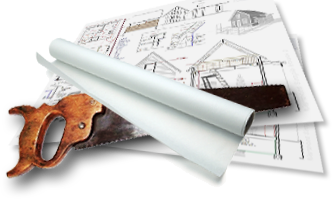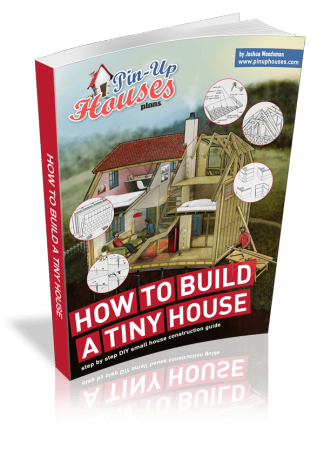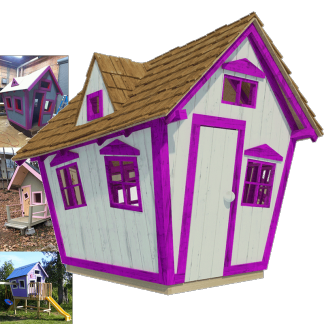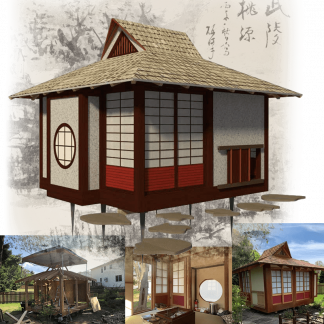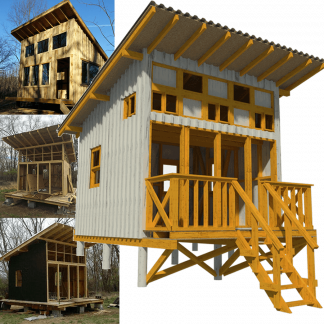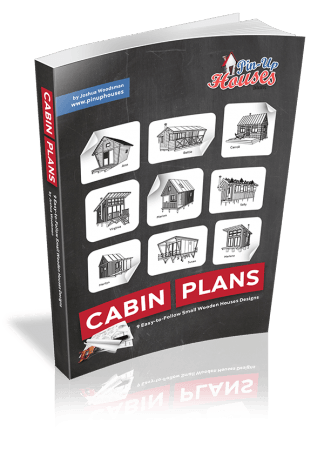Making the most of limited space in tiny homes can be a challenging yet rewarding endeavor. A well-thought-out playroom can transform even the smallest of spaces into a fun and functional area for children. By maximizing vertical space and using multi-functional furniture, small areas can accommodate a vibrant playroom without compromising on style or utility.

Parents often seek creative solutions for fostering a playful environment that encourages creativity and development. Incorporating storage solutions that double as play areas can be the key to organizing toys and enhancing the room’s functionality. Modular furniture and fold-out options offer the flexibility needed to adapt as children grow and their needs change.
Maximizing Space with Multifunctional Furniture

In tiny homes, playrooms can be efficiently designed by incorporating multifunctional furniture.
Convertible Storage Solutions
Convertible storage solutions play a vital role in maximizing space. Furniture pieces like ottomans or benches that double as storage units are essential. They provide ample room to store toys and games, helping to keep the area neat.
Some tables can double up as toy chests or bookcases. This allows for the surface to be used for play or study, helping keep everything organized. Considering options like fold-out desks or wall-mounted shelves can also be useful.
Collapsible Play Structures
Collapsible play structures are practical for tiny homes. These structures can be easily assembled and disassembled, allowing for flexible use of space. For example, a tent or tunnel that folds flat when not in use can provide a play space only when needed.
Choosing high-quality collapsible play structures ensures durability and safety. Matters like easy maintenance and cleaning are also important to consider to ensure longevity and practicality.
Strategic Layout and Design Techniques

In small playrooms, maximizing functionality while maintaining a sense of openness is crucial. Focusing on vertical space, built-in components, and creating an illusion of spaciousness can make a significant impact.
Vertical Space Utilization
Utilizing vertical space efficiently is essential in tiny playrooms. Wall-mounted storage solutions such as shelves and pegboards can help declutter the floor area. These can hold toys, books, and art supplies, making them easily accessible yet neatly organized.
Loft beds with play areas underneath provide dual functionality, saving floor space. Hanging storage bags or baskets on the walls can also attractively consolidate small items. Consider vertical art displays or using the walls as a canvas for chalkboards and whiteboards to add both function and style.
Built-In Components
Incorporating built-in components is a smart way to make use of limited space. Custom cabinetry can be tailored to fit specific needs and dimensions, providing ample storage. Built-in seating solutions with storage underneath, such as benches, can serve dual purposes effectively.
Accordion doors or folding partitions are innovative solutions for sectioning off play areas without permanently dividing space. By integrating elements that serve more than one function, the playroom can maintain a clean and organized appearance while minimizing clutter.
Illusion of Spaciousness
Creating an illusion of spaciousness helps make a tiny room feel larger. Use light colors for walls and furniture to reflect more light, making the space appear more open. Mirrors can be strategically placed to amplify natural light and give an impression of depth.
Transparent furniture, such as acrylic chairs or tables, can give an airy feel while maintaining functionality. Opt for multi-functional furniture pieces that can be easily moved or rearranged to adapt to the children’s needs. Employ lighting strategies like layers of lighting to add warmth and create a sense of dimension.
Decor and Color Schemes

Choosing the right decor and color schemes can make a small playroom feel bright and spacious. Light colors and themed designs can transform cramped areas into inviting, playful spaces. You can also introduce interactive wall art that complements your theme—learn more about paint-by-number kits that double as both decor and a fun activity for kids.
Choosing Reflective and Light Colors
Light colors such as soft blues, light greens, and subtle yellows can brighten up small playrooms. Reflective surfaces, including glossy finishes and strategically placed mirrors, help bounce light around the room, enhancing the sense of space.
Decor Tips:
- Use Pastel Paints: They create an airy feeling and keep the room from feeling confined.
- Mirrors: Position in a way that reflects natural light or playful imagery.
- White Furniture: Creates a clean, expansive look and complements light walls.
Playroom interior designers often recommend simple window treatments to allow maximum sunlight. Adding light-colored rugs can also help in defining play zones without overwhelming the room.
Themed Playroom Inspirations
Themes add personality to a playroom. Nautical, nature, or storybook themes can stimulate creativity. For example, a nature-themed room could incorporate green accents and wall decals of trees and animals.
Focusing on a theme helps in selecting appropriate decor items and accessories. Storage solutions can also be themed, like boats or treasure chests for a nautical theme. Design professionals advise keeping themes versatile to accommodate evolving child interests.
Innovative Storage Options

Maximizing space in tiny homes requires smart solutions. Finding ways to store toys and supplies can transform a small area into a functional playroom.
Hidden Compartments
Hidden compartments are essential for maintaining an uncluttered environment. Furniture like ottomans or benches with built-in storage provides an opportunity to stow away toys when not in use. This design keeps the area tidy and toys accessible.
Under-bed storage is another effective choice. Utilizing shallow bins or drawers, items can be organized and easily reached by sliding them out. By incorporating these discreet storage solutions, small spaces can remain open and welcoming, allowing for more playtime and less cleanup.
Wall-mounted Organizers
Wall-mounted organizers utilize vertical space and help free up floor area. Installing shelves at varying heights allows for easy access to frequently used items, with higher shelves reserved for less frequently needed objects.
Pegboards offer customizable setup options. Hooks, shelves, and baskets can accommodate various toys and supplies, allowing for an adaptable, evolving play space. Magnetic strips serve as another option to hold metal toys or tools, combining function with a neat, modern look.
By using wall-mounted solutions, the limited space in tiny homes can be fully maximized, providing both storage and display options within the playroom.

